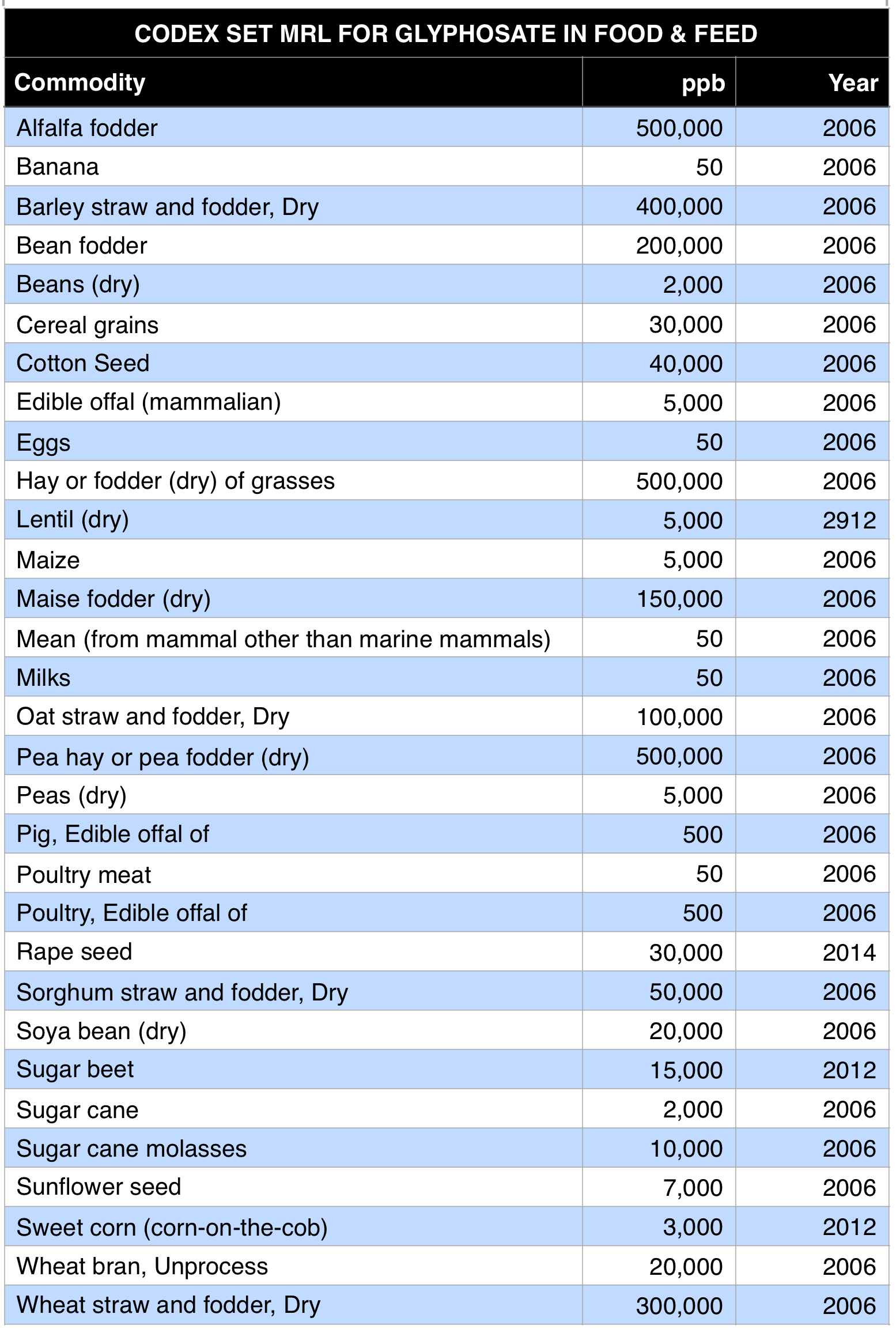To : Dr. D. Kanungo, dkanungo@nic.in
Date : Friday, March 8, 2019
Subject : Codex Alimentarius – 38th Session of the Codex Committee on Pesticides, Fortaleza, Brazil, April 2006 – setting of safe MRL for glyphosate in food and feed.
Dr. Kanungo,
You were mentioned at the top of the Indian delegation that attended the above Codex meeting in Brazil in April 2006, when MRL levels of glyphosate in many food and feed items were agreed upon, as reproduced here. I have a few questions to you in this regard.
Glyphosate MRL set for banana is 50 ppb (parts per billion) or 0.05 mg/kg, while the same for Maize is 5,000 ppb and that for unprocessed wheat bran is 20,000. Do you have actual proof that only 50 is safe for banana while much higher values for Maize and even higher for wheat bran are also safe? If you have seen these proofs I request you to make it available to me or to the people of India.
However, selected reports from scientists claiming they have checked and found glyphosate to be safe at this or that level – is not proof. Rather, these are third party opinions, which can always be selectively filtered to promote a false idea of safety. Actual proof of safety consists of raw data and supporting report of actual tests conducted, involving test animals, say rats. A group of such animals are subjected to a measured dose of glyphosate in their food, while an identical group of animal are also observed, living an identical lifestyle and eating identical food, but without any glyphosate. Health parameters of these two groups are recorded for their entire life span, say two years, and then onto the next generation’s lifetime, totalling perhaps three or four years. This comparison is usually the basis by which the testing team prepares their report on if that level of concentration of glyphosate in that kind of food does or does not increase health risks to the target animals. For example, if the clean eating rats show up a natural rate cancer or another specific disease in 5 percent of the population, and if the rate for the same disease in glyphosate exposed population turns out to be 10 percent, then the test team might conclude that glyphosate, at that specific dose in that kind of food, doubles the cancer risk to the test animal.

I suspect India does not conduct such tests, and has been getting documents under control of the very industry that benefits from sale of the biocide such as glyphosate, presenting a conflict of interest. I am also aware that even such suspected compromised proof of safety has been kept hidden by the Government of India.
This letter is to see if your group actually knew anything about the safety of glyphosate and might be wiling to share it with the public, or if the Indian delegation might have been pressured by the government or the industry or the lobby, to support the industry by perhaps overlooking public safety. I have noted from the Codex documentation, that the Indian group did not object to the MRL limits.
I have reason to suspect India is being mass poisoned by imported pulses and grains that contain extremely high levels of glyphosate, under the argument that such levels of glyphosate contamination is deemed safe by the Codex, one that your group accepted back in 2006. I suspect this mass poisoning is one of the root causes behind the runaway rise of multiple groups of diseases in the country, as well as forcing more Indian pule farmers into insolvency. Hence I write this letter in an effort to get to the truth of why India agreed to setting such arbitrary and unproven levels of MRL for glyphosate in food.
This letter is for the benefit of the people of India, and may be shared with the public, along with any response received, or not received.
Hoping for a response,
Santanu Mitra
49/65 Prince Gulam Mohd Shah Road, Golf Gardens, Kolkata 700033
9831713068
Copied to:
